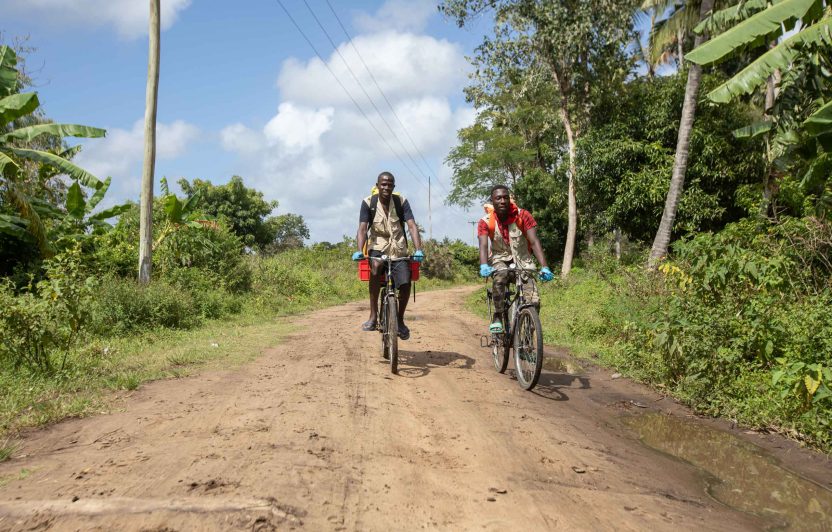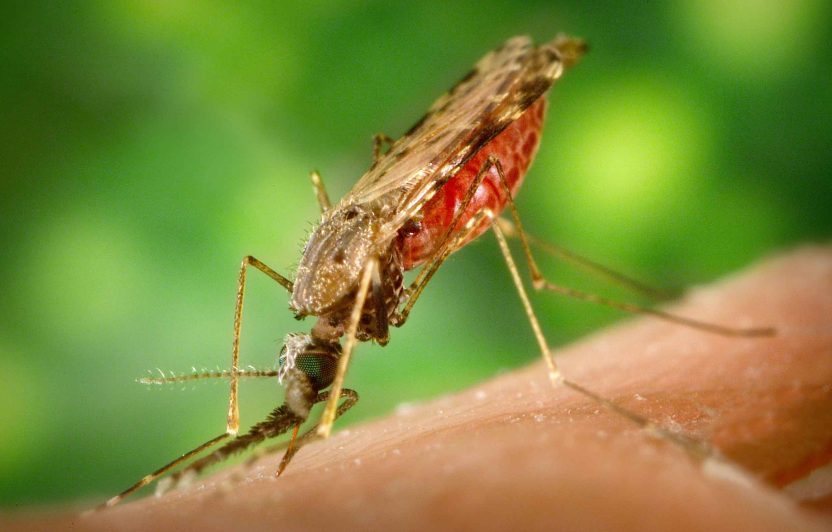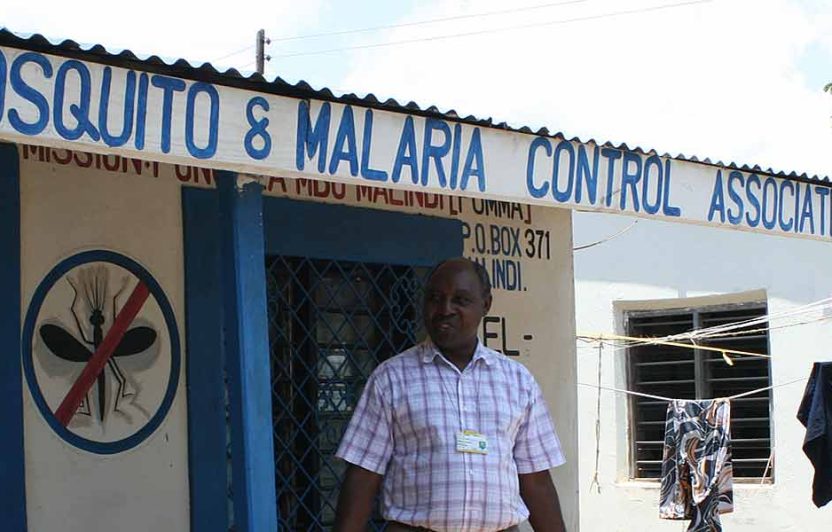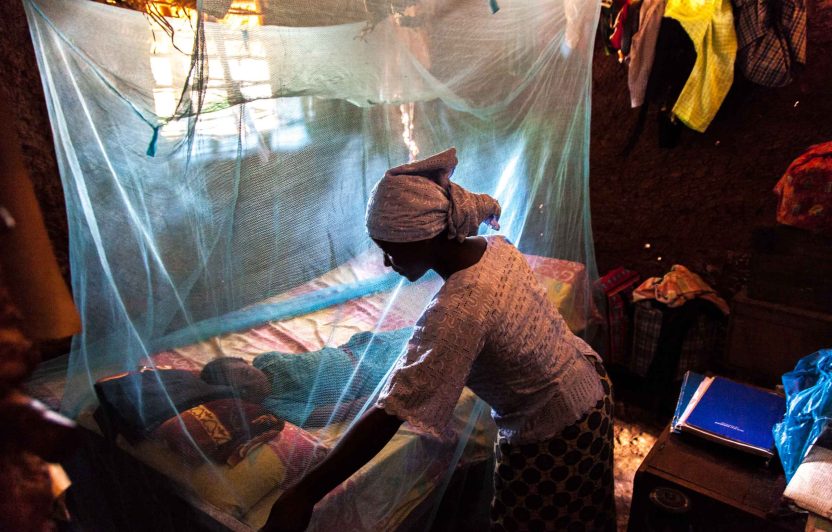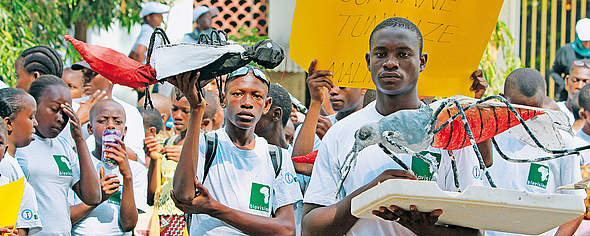
In early October, Tedros Adhanom Ghebreyesus, director general of the World Health Organization (WHO), declared that the approval of the first malaria vaccine marked a historic shift in the fight against the disease. For the first time, the WHO is recommending the widespread use of the vaccine among children in sub-Saharan Africa and in other regions with moderate to high Plasmodium falciparum transmission. Plasmodium falciparum is the deadliest of the five malaria pathogens and the most prevalent on the African continent, where more than 90% of malaria cases occur. Worldwide, more than 230 million people are infected with malaria each year, and more than 400,000 die as a result.
A malaria vaccine has been researched for around 60 years. Accordingly, the WHO’s announcement of success reverberated in the media. The vaccine’s approval is an enormous step towards alleviating suffering and saving countless children’s lives. But it does not mean the end of the deadly disease. Compared to other vaccinations, it offers only low levels of protection: 40% against infection and 30% against a fatal course. “It is also extremely important that we continue to invest in existing measures,” says Ulrike Filinger, the senior scientist who manages Biovision-funded malaria projects at icipe. These existing measures include mosquito nets, insecticides and medicines. Vaccination does not replace these measures; it merely complements them. In reality, new measures and additional tools to fight malaria are still urgently needed.
Just last year, the World Health Organization warned that the malaria death rate could double as a result of obstructions to malaria prevention and treatment programs caused by the COVID-19 pandemic. Even before the pandemic, progress in eliminating malaria had stalled in many countries. Some countries were even experiencing increasing numbers of malaria cases. Pregnant women and children under five continue to suffer most from the disease.
The rise in cases has several causes, including increasing mosquito resistance to insecticides, the population’s limited access to health centres and weak health systems. Recently, a study showed evidence of resistance in parasites to standard drugs used for the treatment and prophylaxis of malaria infections.
As in all Biovision projects, we focus on controlling malaria using a holistic, ecological approach and on involving and mobilising the local population in addition to relying on established methods such as insecticide-treated mosquito nets and indoor residual spraying. Previous Biovision projects have supported the application of biological larvicides in mosquito breeding habitats and general environmental management for malaria vector control, including draining of stagnant water near houses. The package of measures also included sealing houses in addition to the consistent use of bed nets.
Other approaches with great potential are transmission-inhibiting approaches, which prevent the development of parasites in the vectors. Additionally, there are also phytotherapeutic methods used in the treatment of malaria, for example from the medicinal plant genus Artemisia (see box).
Better protection against malaria thanks to greater knowledge
Knowledge transfer also plays an important role. The population is informed about the causes of malaria and possible prevention measures through, for example, plays or information stands at public events. Local “mosquito scouts” have proven to be key to success. Many of them are also involved in other functions in their communities, and their advice and instructions are heeded. Through targeted community education and a variety of awareness-raising activities, people in malaria-affected areas are thus learning how to sustainably protect themselves and their families from the disease. Through close local cooperation with governmental and non-governmental institutions, the health sector and related sectors, it is possible to sustainably strengthen existing structures at the local, regional and national levels and make them more resilient. This shows that coordinated and integrated approaches to fighting malaria are more important than ever.
Biovision promotes the One Health approach for greater environmental awareness
The past two decades has seen a worldwide increase in the incidence of infectious diseases. Zoonotic spread, meaning pathogen transmission from animals to humans, is becoming increasingly important and poses a growing threat to the health and economic security of Africa. This is why Biovision remains committed to the One Health approach for the sustainable and integrated vector control of arthropods (the phylum that includes spiders and insects), which are vectors of malaria and other diseases (including sleeping sickness and Rift Valley fever).
Biovision has been working with its partner organization icipe in Kenya since 2019 on the development of an integrated One Health approach to further reduce the malaria pathogen: cattle are sprayed with a bio-insecticide and then serve as bait for mosquitoes, which die while trying to suck their blood. This successfully decimates the mosquito population. A simultaneously advantage of this method is that other disease vectors such as ticks and tsetse flies, which spread dangerous diseases, are also controlled.
Despite progress, new initiatives and a malaria vaccine, there is still a need for greater awareness among policymakers and the public about the use of integrated approaches and interventions in malaria control, including better understanding of the One Health approach. Ulrike Filinger from icipe emphasizes: “At all levels – from the national to the community level – it is essential to strengthen the understanding that eliminating malaria can only be achieved through the integration of instruments and actors.”
Artemisia spp.: a plant genus with potential?
2015 erhielt die chinesische Professorin Tu Youyou den Nobelpreis für die Entdeckung von Qinghaosu (Artemisinin), einem Inhaltstoff aus Artemisia-Pflanzen. Artemisinin und Derivate sind heute Bestandteile von kombinierten Antimalaria-Medikamenten. Die moderne Forschung darüber begann 1960 mit der ethnobotanischen Durchforstung der alten chinesischen Schriften, der «Materia Medica», setzte sich in den 1970er Jahren im Labor mit der nachgewiesenen Eliminierung der Malariaerreger Plasmodium spp. fort und endete in den frühen 2000er Jahren, als die WHO begann, im grossen Stil zu produzieren. Das ist ein halbes Jahrhundert bis zur Anerkennung und Würdigung des Wirkstoffes! Und was ist mit der Pflanze selber?
Artemisia spp. ist nicht nur die Pflanzengattung, welche die Baupläne für Antimalaria-Wirkstoffe geliefert hat. Sie kann noch viel mehr. Ein Tee aus dem Kraut ist in vielen Haushalten oder abgelegenen Krankenstationen in Afrika eine sofort bereitstehende und oftmals einzig bezahlbare Alternative, um eine beginnende Malariaerkrankung unverzüglich zu behandeln. Sie kann lebensrettend sein auf dem oft beschwerlichen Weg ins Spital.
Leider unterstützt die WHO diese Zubereitung nicht, ja sie rät von der Anwendung sogar ab. Dies mit der Begründung, der Artemisinin-Gehalt im Tee sei zu tief, führe zu vielen Rückfällen und zur Resistenzbildung. Viele Studienresultate zu Artemisia spp. werden kontrovers diskutiert. Konsens herrscht darüber, dass ein Tee ein Vielstoffgemisch ist, das zahlreiche gelöste Einzelsubstanzen aus dem Pflanzenkraut enthält. In der Phytotherapie gibt es keine wissenschaftlich belegte Resistenzbildung durch Tee-Einnahmen. Im Labor nachgewiesen wurden eine schnellere Aufnahme, eine durch Begleitstoffe aus der Pflanze bedingte bessere Bioverfügbarkeit und ein höherer Artemisinin-Spiegel im Blut im Vergleich zu den Tabletten. Klar ist: Zu Artemisia spp. braucht es dringend mehr Forschung.



